Spatial biology, cell therapy, targeted protein degradation, omics, and large-scale computational analyses of all types dominated at this year’s American Association of Cancer Research (AACR) Annual Meeting in San Diego, California. Among the over 7,200 abstracts, 3,000 posters, and dozens of symposia presented—the largest in the event’s history—show attendees got a glimpse of the future of what’s to come for cancer care.
In his opening address, Phil Greenberg, MD, outgoing president of AACR, predicted that recent advances in technology will lead to “quantum leaps in prevention, diagnosis, and treatment of cancer” in the coming decades. As excitement about these latest developments grows, Greenberg also cautioned about the ongoing need for clear, concise communication with the public. The COVID-19 pandemic demonstrated the disconnect between scientific understanding among scientists and that of public perception. To bridge this gap in understanding, scientists need to treat public outreach like any other professional skill development and, according to Greenberg, seek out role models and mentors who can demonstrate effective scientific communication with non-scientists.
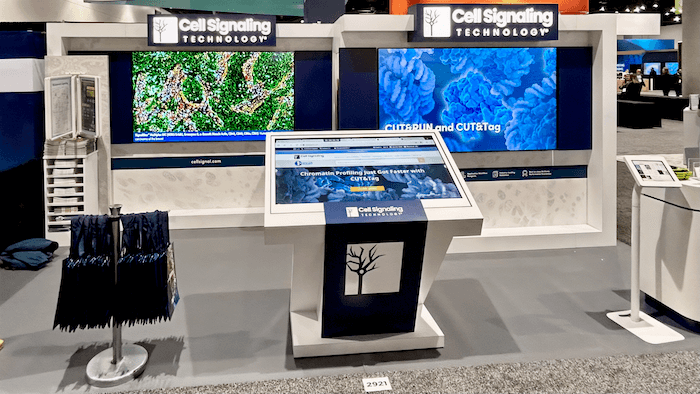
The CST booth at AACR 2024.
Even within the scientific research community, the growing use of artificial intelligence, large language models, and complex computational analyses necessitates increased cross-disciplinary collaboration and effective communication.
“We are in an era of large datasets, large amounts of clinical data, and complex bioinformatics tools that require powerful methods of analysis to properly leverage all of this information into effective science, follow-up experiments, and consequently, therapies,” explains Brad Hogan, Development Scientist, Immunology at CST. “It's quite a long way away from my PhD days of focusing on one or two particular genes or proteins in one or two particular pathways.”
“Computational scientists are now front and center in the battle against cancer and are increasingly in attendance at industry conferences like AACR to help those of us trained in biology understand the impact of large-scale computational analyses," adds Antony Wood, Senior Director, Product Design & Strategy at CST. “As data science shifts from the academic or theoretical realms into bona fide translational medicine, it requires a new way of communicating and collaborating with peers who may have limited experience in each other’s fields.”
There’s a lot we can learn about effective scientific communication as these barriers are broken down. Any biological researcher who has been initially confounded by the nuances of AI and data science would do well to remember how foreign it can feel to learn a new technical field. This experience, and the strategies that worked for successful collaboration, can be used to encourage more frequent, impactful conversations between scientists and non-scientists alike. The ability to articulate complex concepts and ideas, and make science understandable and accessible to the public is critical for the future of research.
To kick off these conversations, we asked CST scientists who attended AACR what they were most excited about at the show, and what it might mean for the future of cancer research. Here’s what they had to say:
Amrik Singh, Fellow, Immunology Product Design & Strategy
"Continuing the trend from AACR 2023 and SITC 2023, there is a tremendous focus on developing innovative cell-based immunotherapies for the treatment of solid tumors. Genome-wide CRISPR screens and synthetic biology are yielding an unprecedented number of novel approaches to hack and rewire T-cell biology in order to facilitate a potent assault on solid tumors.
Antony Wood, Senior Director, Product Design & Strategy
“The application of large language models (LLMs) to understanding the complexity of cancer as a disease—using single-cell transcriptomics, proteomics, genetics, and possibly phospho-proteomics—is entering the stage where successful predictions of therapeutic vulnerabilities have been identified through large-scale computational analysis rather than low-throughput pre-clinical research. In addition, AI-based image analysis methods for diagnostic pathology are here; the question is WHEN (not IF) such technologies will be adopted by the community and the regulatory bodies.A word of caution, however. Whenever and wherever AI is used, it is critical that rigorous validation methods are used to verify results, in the same way we would for any other type of tool, technology, or therapy developed in the lab.”
Brad Hogan, Development Scientist, Immunology
“I was excited by the fact that many scientists now are able to leverage large, multiple "-omics" datasets to zero in on not just novel therapeutic targets, but ideal combination therapy targets or specialty antibody design for cancer therapies, with very promising efficacies. The ability to marry these large omics datasets with machine learning to generate both specific and effective therapies for particularly difficult forms of cancer such as triple-negative breast cancer, non-small cell lung cancers, and pancreatic cancer, is very exciting, and hopefully will result in increasing numbers of effective therapies.”
Jeremy Fisher, Associate Director, Conjugation
“Multiplex and multimodal strategies are entrenched in every aspect of cancer research, from novel therapeutics such as bispecific antibody drug conjugates and trispecific killer engagers to fully integrated spatial proteomics, transcriptomics, and 3D imaging. Additionally, novel tools for live cell analysis and multiscale modeling address the stochastic nature of most platforms used to interrogate protein expression and cellular phenotyping.
Understanding the dynamic interplay between the immune system and tumor microenvironment in a spatiotemporal context will provide new opportunities to guide therapeutic options.”
Cell Signaling Technology at AACR 2024
Every year at AACR, CiteAb honors life science organizations in the research reagent sector to acknowledge their contributions to the industry. These awards are based on several factors, including the frequency of product citations in scientific publications across diverse fields. This year, we were proud to be recognized in three distinct categories:
- Award for Significant Individual Impact: Roberto (Roby) Polakiewicz, PhD, Chief Scientific Officer at CST, was recognized for his commitment to high-quality antibody manufacturing, including the development of novel antibody methods and steadfast advocacy for scientific reproducibility standards for antibody manufacturers.
- Antibody Supplier Succeeding in South Korea: Based on an analysis of CiteAb’s antibody reagent citation database, CST was the company with the most citations for antibodies in South Korea over the past year.
- Innovation Award: The SignalStar® Multiplex Immunohistochemistry (mIHC) assay was Highly Commended in CiteAb’s Innovation Award category. The solution is a flexible, out-of-the-box tool for spatial biology research that uses mid-plex, high-throughput IHC assays for up to 8-plex amplification in two days.
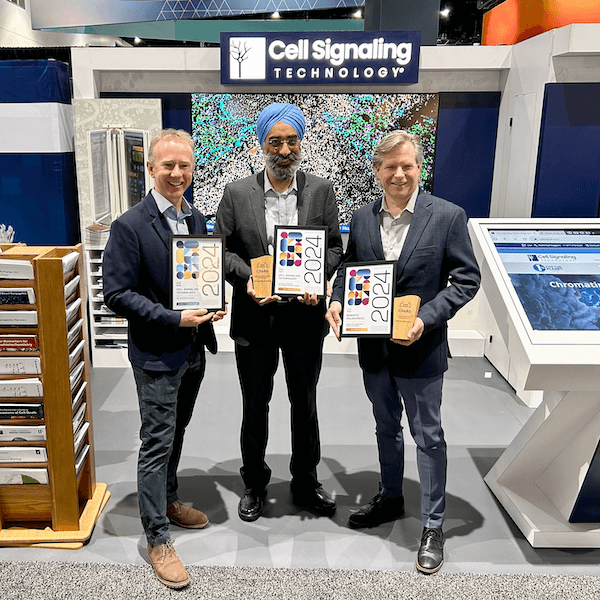
From left to right: Andrew Chalmers, CEO of CiteAb; Dr Harjit Kullar, Sr VP of Marketing at CST; and Craig Thompson, COO of CST.
CST Poster and Presentation Highlights
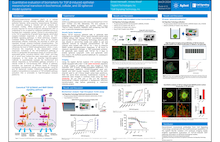 |
Poster: Quantitative evaluation of biomarkers for TGF-β-induced epithelial-mesenchymal transition in biochemical, cellular, & 3D spheroid model systems |Tony Wood, PhD, Sr Director of Product Design & Strategy, CST with Agilent Technologies |
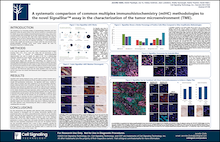 |
Poster: A Systematic Comparison of Common mIHC Methodologies to the Novel SignalStar Assay in the Characterization of the TME | Jennifer Ziello, MS, Sr Research Associate, CST |
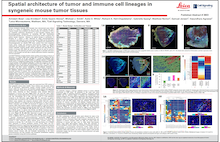 |
Poster: Spatial Architecture of Tumor and Immune Cell Lineages in Syngeneic Mouse Tumor | Lisa Arvidson, PhD, Custom Antibody Conjugation Team Lead, CST with Leica Microsystems |
|
Poster: A Novel Monoclonal Antibody for the Detection, Enrichment & Activation of Cells Expressing scFv-Based Chimeric Antigen Receptors | Amrik Singh, PhD, Senior Fellow, Immunology, CST |
|
|
Poster: Selecting Your Epigenomic Assay: Comparing ChIP-seq, CUT&RUN, and CUT&Tag | Angela Guo, PhD, Scientist, Epigenetic Applications, CST |
Interested in learning more about any of our posters or presentations from AACR? Reach out to us, we'd love to connect!
23-CAN-05950

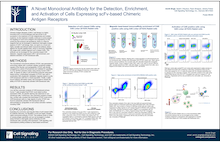
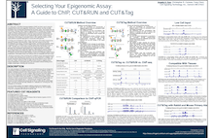



/42157_chimeric%20antibody%20blog%20featured3.webp)

